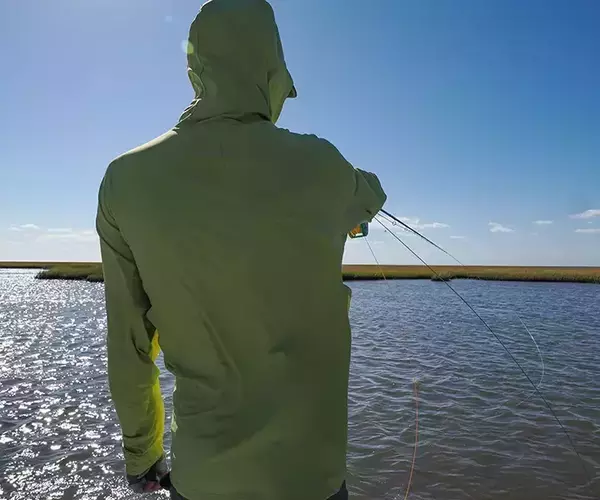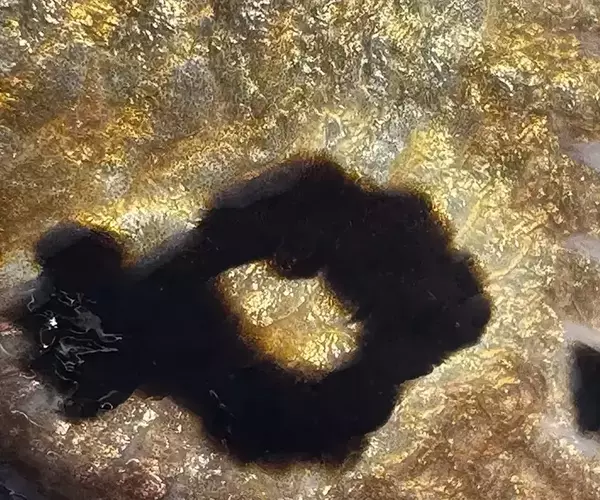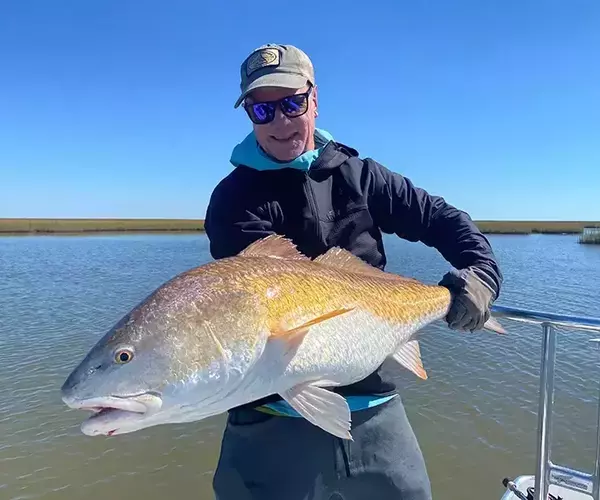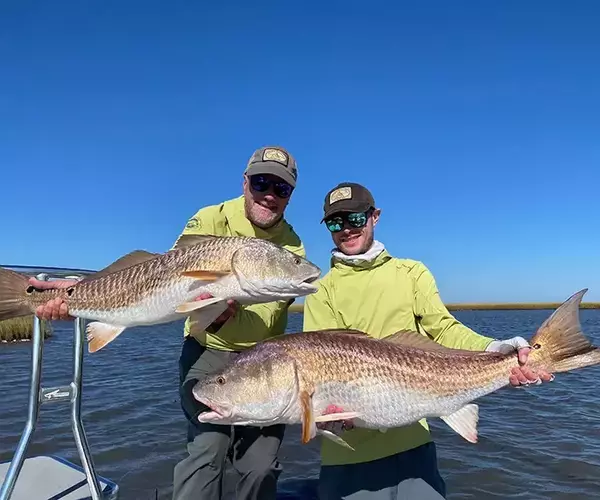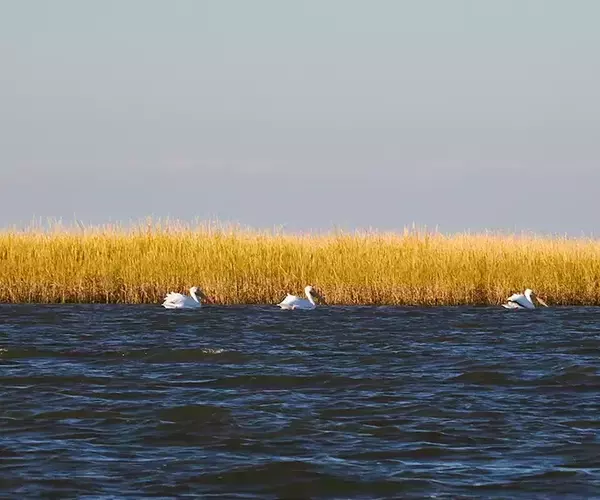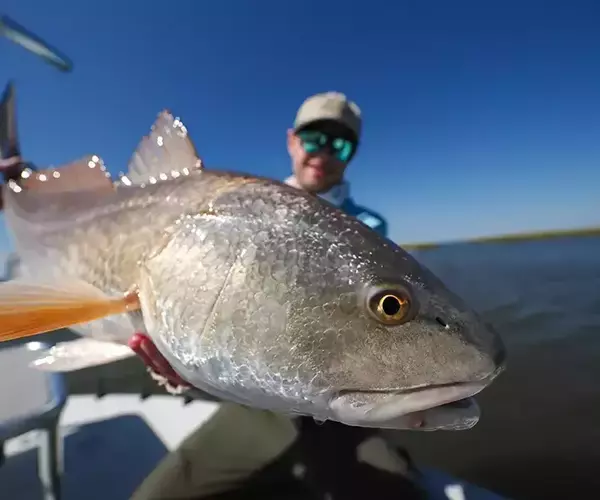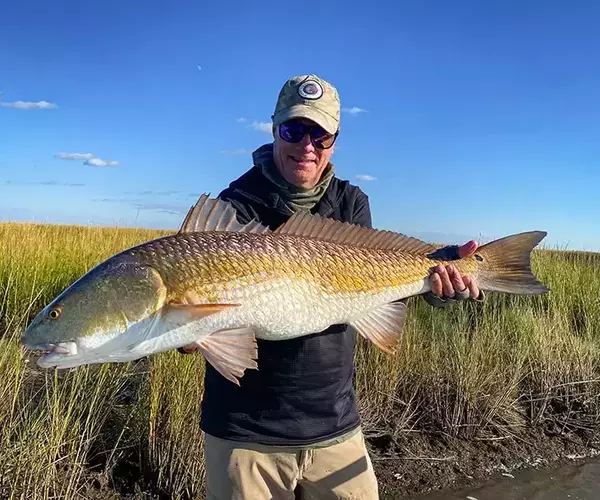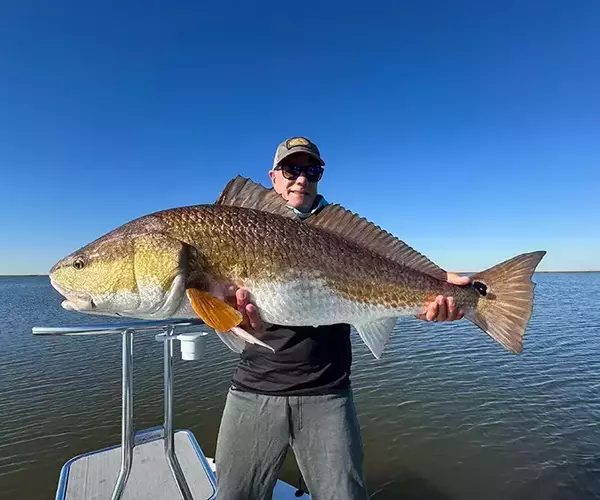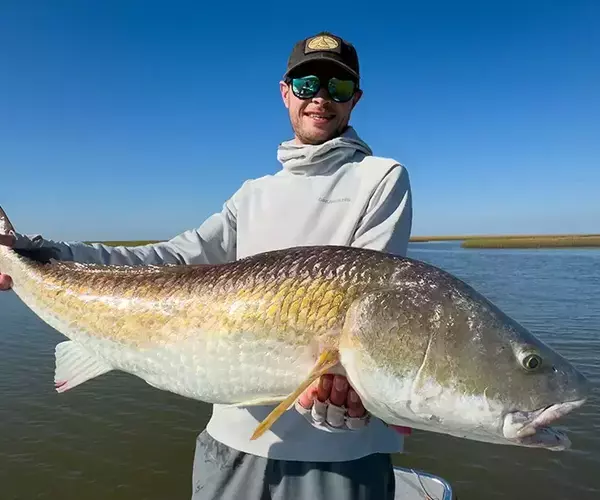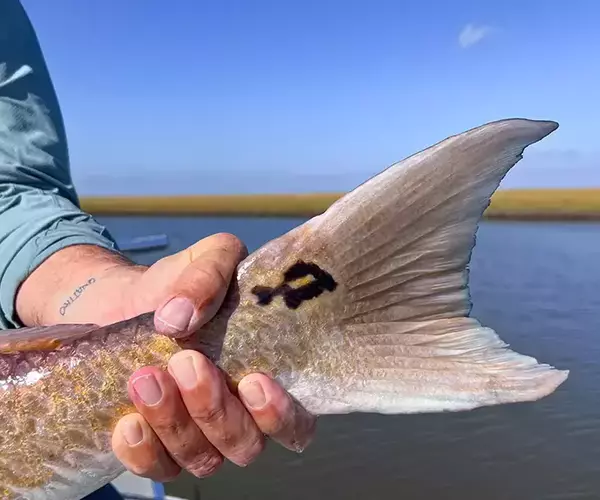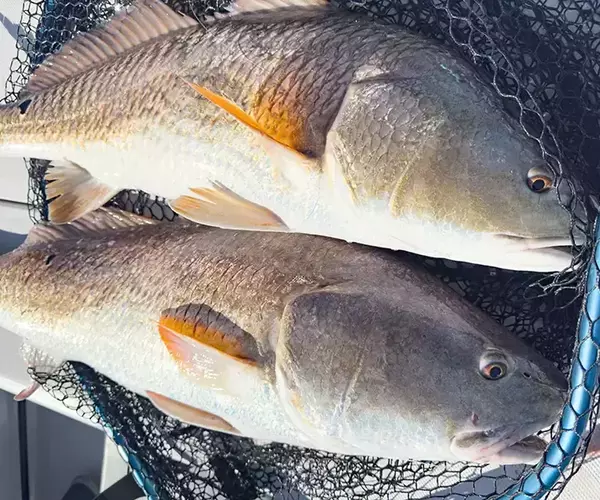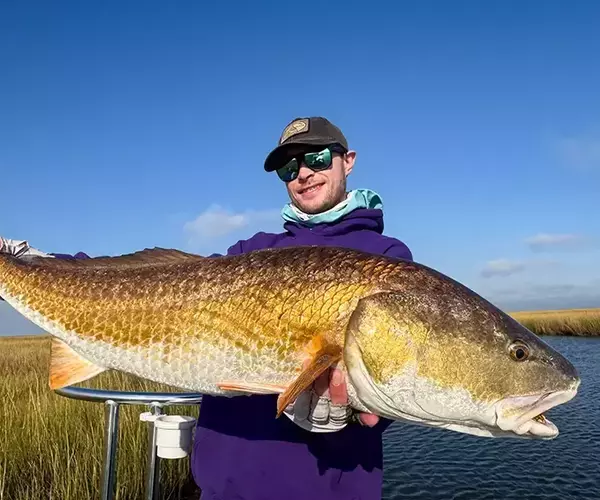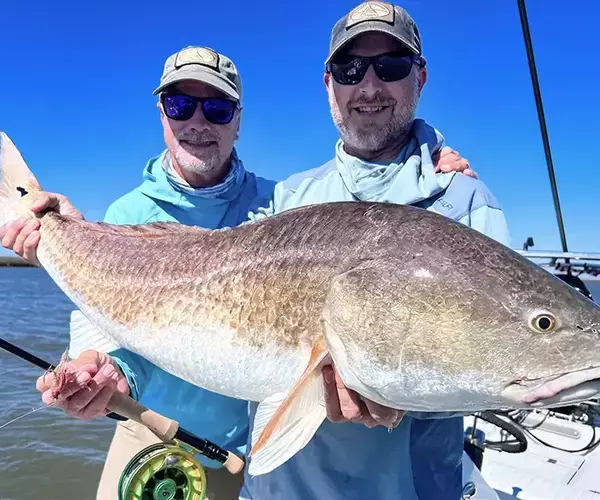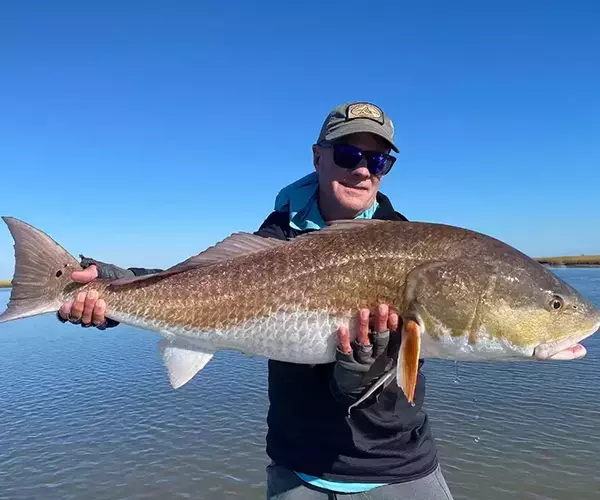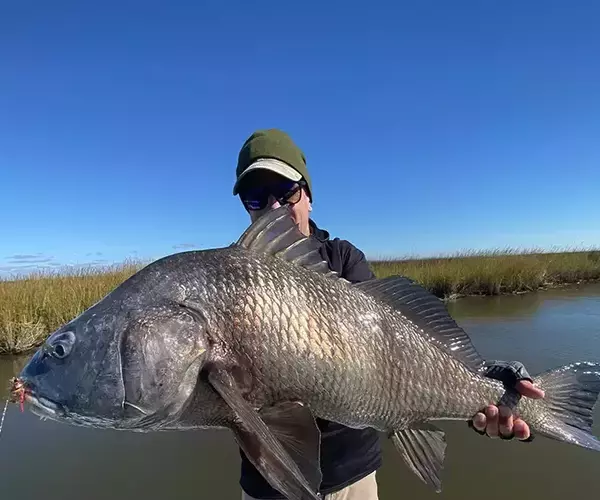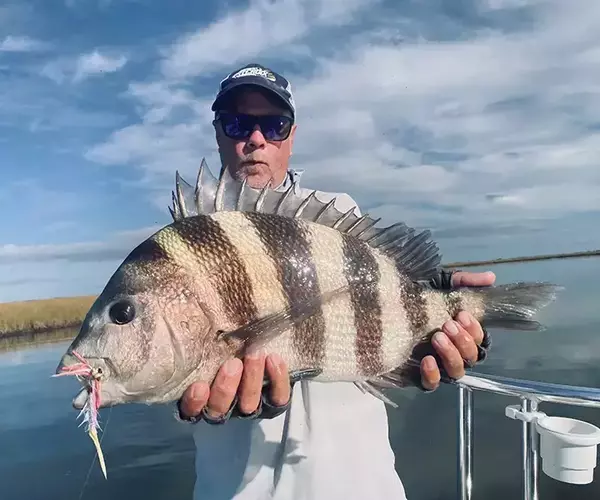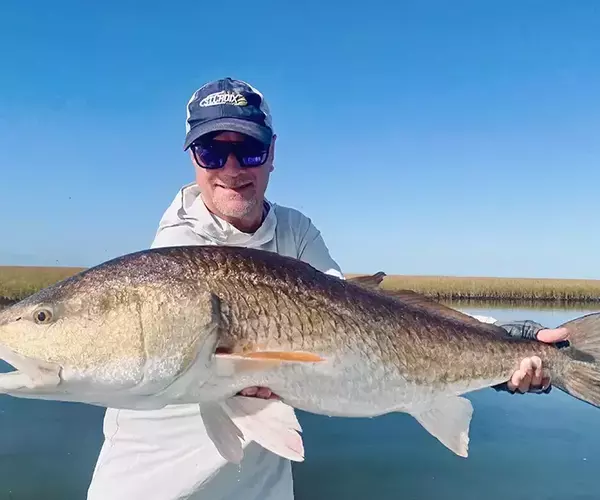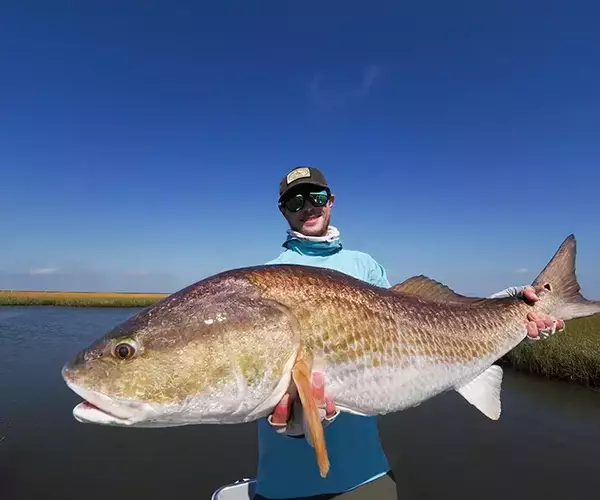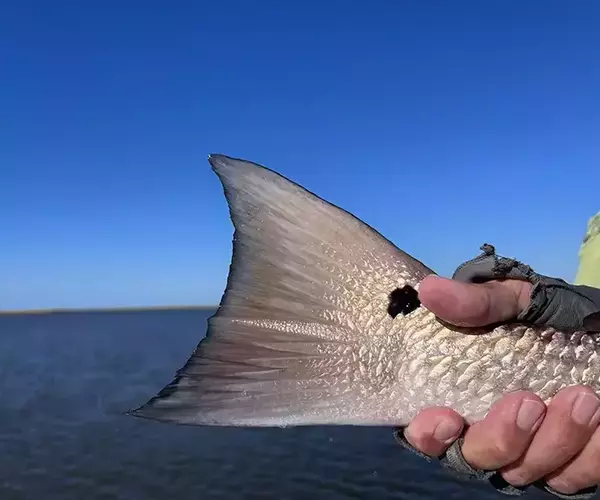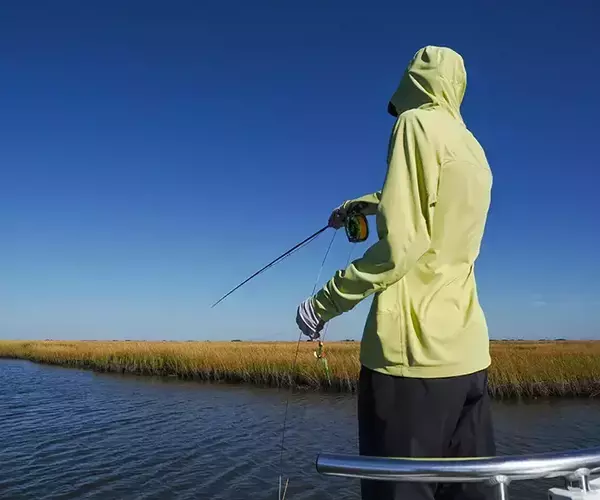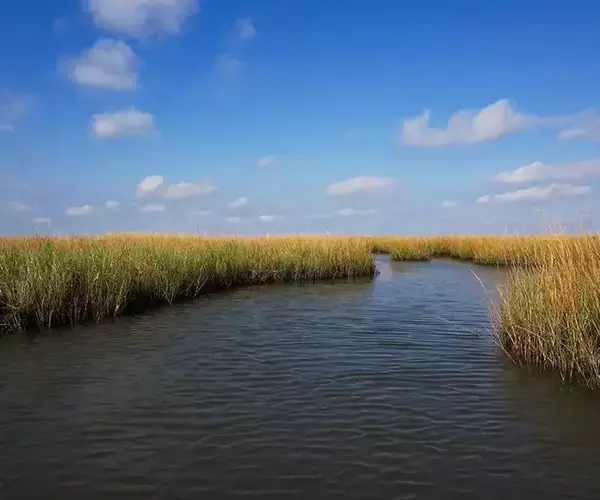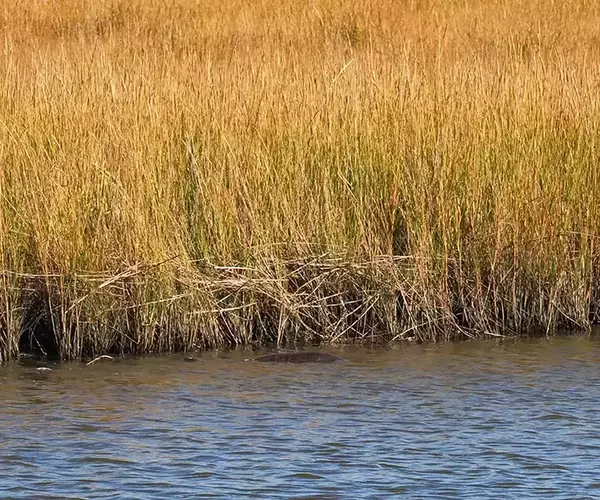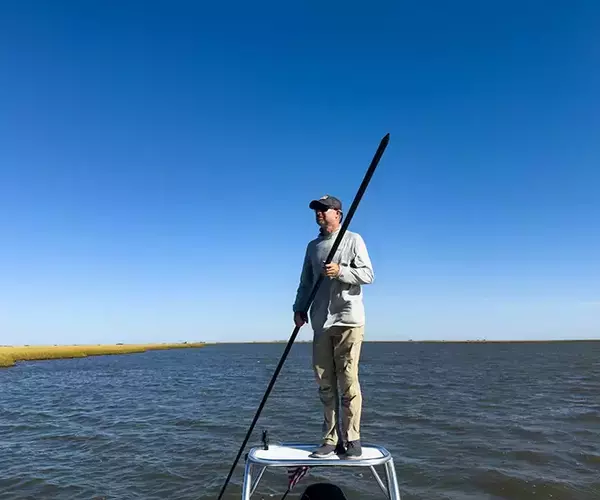Louisiana Redfish Fly Fishing: 2025 Trip Report
Posted by: Toby Swank
Date: 11/21/2025
Our 2025 Louisiana redfish fly fishing trip is in the rearview mirror! We had an epic run over the last couple of weeks in October with more big fish than ever before and some spectacular weather. Check out the report and gallery.
2025 Louisiana Redfish Fly Fishing Trip Report
Just back from the 2025 “Swamptober” tour of southern Louisiana with Captain Ben Cooley of Mucking Marauders. Based out of Cocodrie, Capt. Cooley has quick access to a diverse coastal zone that includes hard-bottom barrier-island flats, soft mud flats, outer edges, and interior ponds. The weather, tides, and fish movements vary from day to day, making each outing unique. When the plan comes together, angler and guide intersect with mature redfish—called “Bull Reds”—as they move between the Gulf and the interior marshes.
Why October and November?
Mature redfish spawn in near-offshore waters between September and November, holding in deep water and around nearby island passes in large schools. During the day, these adult fish cruise the interior waters to rest and “refuel” on a steady diet of blue crabs, shrimp, and mullet. We stick to the marsh edges and interior flats, searching for singles and small groups of bull reds hunting the shallows.
This is classic sight-fishing at its best, targeting mature fish between 30 and 45 inches long. Depending on their condition and recent diet, Louisiana redfish of this size average 10 to 30 pounds. They are strong, thick fish that pull hard, resist being turned mid-fight, and are tough to lift as the battle winds down near the boat.
Making it Happen
Fish are spotted “belly crawling” along shallow edges and across muddy flats with their backs high out of the water, or by their orange “glow” when they turn just right in deeper water.
They aggressively cruise along bank edges hunting inattentive blue crabs. More often than not, a bull red first reveals itself from a distance with a telltale crash of water when a crab is finally found.
This interaction is a true “sight to see” and puts both guide and angler on high alert, as these fish will almost always eat a fly. The priority becomes boat positioning to cut the fish off before it retreats into deeper water. If we can relocate it quickly, the result is nearly always a tight line and a heavy pull.
Once in position, the angler must make a short, accurate cast with oversized, heavy crab or shrimp imitations. A slow, open casting stroke pays dividends, allowing a softer landing than a tight loop at distance can provide. Once the fish notices the disturbance, a slight movement of the fly is usually all that’s needed to close the deal.
It sounds easy, but redfish don’t always explode on the fly. They are old, experienced fish, and it doesn’t take much to put them on high alert. Shadows from the angler or guide, the fly line from one too many false casts, or even passing birds can put off even the happiest-looking bull red. Water slapping the boat or a misplaced step on the bow can send them diving out of sight in an instant.
The successful angler waits patiently for the right casting angle, leading a cruising fish by a foot or two.
Looking Back and Ahead
Louisiana fly fishing for redfish has been part of my annual rotation for the better part of 15 years now. During that time, I’ve marveled at how it can seem effortless one hour and nearly impossible the next. More often than not, I think I have it all figured out—the right fly, cast, and retrieve—only to be rewarded with a boil of mud as the target roars away rather than eats my fly.
Big Fish in 2025
The 2025 fall trip produced more big fish than any year I can recall. A tough day brought 4–6 bull reds to the boat, while average days saw closer to a dozen between two anglers. A few spectacular days produced numbers pushing 15 fish for a single angler. Most fish ranged from 18 to 25 pounds, with a few outliers, and two that pushed the 30-pound mark.
Better Than Average Weather
The weather was key. We had a couple of weeks of steady sunshine, with only occasional passing clouds. The dark shadows of subsurface fish stand in sharp contrast to the water color, making them easy to spot when they’re near the surface. A distinctive “glow” appears when the sun hits a broadside fish just right, revealing deeper fish on the hunt.
When clouds roll in, your only hope is to find a fish pushing water across a flat or belly crawling along a bank.
We had some windy days, but the sunshine offset the challenges and kept us in the game every day. Most days are shot when winds climb into the high teens and low 20s due to safety and boat-handling concerns. Wind direction and tidal flow can quickly fill or drain a bayou. This year, we were fortunate to have everything in our favor—even on the windy days.
A couple of cool fronts rolled through during our stay, keeping us off the water for several days due to sustained winds in the 30+ mph range. The upside was a drop in water temperatures that brought fresh pushes of new fish into the marsh. These new arrivals showed up in big numbers and were particularly aggressive, leading to a few of the best days I’ve ever had fly fishing in Louisiana.
Looking to 2026
Plans are already set for 2026, with the trip scheduled from mid-October through early November. November is considered the peak of Louisiana’s redfish fly fishing season due to its popularity with other anglers. We prefer quieter boat ramps and less traffic in the marsh, so we go a bit earlier than most.
Email us if you’re interested in joining us for a few days of redfish fly fishing in October 2026 or have a few general questions about redfish fly fishing in Louisiana.
2025 Louisiana Redfish Fly Fishing Trip Gallery
Tackle Call Outs
Fly Rods: I prefer stout rods that can make quick work of a short cast with heavy flies on overweighted fly lines. A long cast here is 40-50’, so it’s more about in close accuracy than going for a deep bend in the rod to “send” 80’ of line. Here are my favorites:
- St. Croix Evos Salt – Nine-foot 8 and 9 weight models (890-4 and 990-4)
- Sage Igniter – Nine foot 9 weight (990-4)
Fly Lines: Overweighted heads make all the difference when trying to “turn over” a heavy fly with lead eyes on a 1/0 – 3/0 hook. The Rio Redfish XP is perfect for this style of fishing, while the SA Grand Slam taper also gets it done. The SA Grand Slam is a more versatile fly line with practical application for all types of flats fishing, whereas the Rio Redfish XP is truly application-specific.
- Rio Premier Redfish XP
- Scientific Anglers Magnitude Slam Grand Slam Clear Tip
Reels: Hatch Iconic Large Arbor 7+
and 9+ loaded with 30-pound Dacron backing.
Leader: Rio Saltwater Fluorocarbon, 6-8 feet of straight 30-pound from the fly line to the fly

